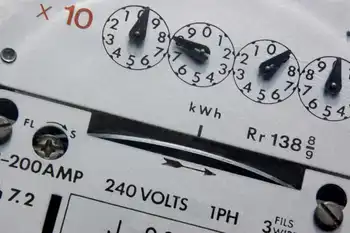Path of power line angers subdivision residents
BOWLING GREEN, KENTUCKY - The announcement of the favored course for a new main power line into Bowling Green quickly drew an angry response from residents of affluent subdivisions along the line's proposed track.
Bowling Green Municipal Utilities plans to build a new substation to serve the growing southeast side of the city, and the Tennessee Valley Authority - which supplies BGMU's power - seeks to build a new six-mile line to that substation.
But residents of Blue Springs Farm, Bent Creek Farms and Chestnut Hill mobilized early to oppose two of the suggested routes, which ran through the Drakes Creek bottomland their homes overlook.
Nevertheless, TVA's preferred course for the line walks the border of the bottomland and opponents' homes.
"The decision is a slap in the face to the people of Bowling Green and to the elected officials who supported them," says a statement issued by Chestnut Hill and Bent Creek Farms homeowners. "We will continue to fight this line at the local, state and federal level, and we will not give up."
Oles Drobocky, president of the Blue Springs Farm homeowners association, said that he and several other area residents wrote the reaction.
"All the residents feel the same way and are 100 percent united in their thoughts on this," he said.
They have previously threatened legal action if the line is built close to their homes and even threatened to flood the bottomland to stop the line.
The bottomland that the power line is expected to cross is actually jointly owned by all property owners in the adjacent neighborhoods, whether they actually border it or not, Drobocky said.
Thus many more homeowners are affected than TVA has said.
Opponents' requests from TVA and BGMU for studies that show a need for the power line and cost comparisons of the proposed routes went unanswered, Drobocky said.
"That's one thing that we asked for months ago and have not received," he said.
David Hall, TVA vice president of electric system projects, said joint TVA-BGMU studies show that the new line and substation will be needed by June 2007.
"TVA's worked very closely with BGMU to study load growth in the area," he said. "The need for the project in 2007 is very clear.
"The city is currently served from the north and the west with two substations. Now with the load growth on the southeast side of town, they've got to have another power line coming into that area."
It will reduce the load on BGMU's two existing substations, making power more reliable, said Miles McDaniel, BGMU manager of Business Development & Marketing.
If one of those substations went out, or a main line broke outside the city during a time of heavy power use, the remaining substation couldn't supply enough electricity to keep the entire city on, he said.
"That's why we need this delivery point," McDaniel said. "BGMU wants to make sure we continue to provide the most reliable service to the Bowling Green community and this is going to help us do that."
Three miles of the six-mile proposed course, running from the existing line near the Old Cemetery Road-Castle Heights Road intersection to a BGMU substation on Cave Mill Road, are on existing utility right-of-way owned by Warren Rural Electric Cooperative Corp.
A TVA fact sheet issued about the project said that the power supplier uses information from property owners, local officials, maps and photographs and field surveys to evaluate its routes.
"Ultimately, in making the final decision, TVA weighs and balances public input and all pertinent environmental, engineering and land use considerations," it says. "Although a single property owner may feel significantly affected, the objective of the process is to ensure that overall project impacts, as well as impacts to the community at large, are minimized."
"We use the same criteria to look at all the alternative routes," Hall said.
Some proposed alternate routes didn't share as much existing right-of-way, are longer and affect more property owners and cross more expensive commercial property, according to the fact sheet.
But the proposed route's course has already been slightly adjusted to avoid a new stream crossing, move away from a wetland and cut the number of land parcels it crosses, it says.
"During limited site investigations conducted to date, no impacts have been identified to park lands, archaeological sites, caves, cemeteries, historic areas, historic structures or sensitive environmental areas," the fact sheet says.
Next, TVA will ask landowners for permission to survey the line's proposed course for the best centerline, then do detailed environmental reviews by walking the course of the line, Hall said.
Discovery of major environmental factors could move the route somewhat, he said.
"Typically, it means a small adjustment, just to work around whatever we find on that detailed review," Hall said.
But based on the information it has already gathered, TVA doesn't expect any major new environmental issues to crop up, he said.
Related News

Sunrun and Tesla Unveil Texas Power Plant
TEXAS - In a significant development for renewable energy and grid resilience, Sunrun and Tesla have announced a groundbreaking partnership to establish a distributed power plant in Texas. This collaboration represents a major step forward in harnessing solar energy and battery storage to create a more reliable and sustainable power system. The initiative aims to address the growing demand for clean energy solutions while enhancing grid stability and resilience in one of the largest and most energy-dependent states in the U.S.
The new distributed power plant, a joint venture between Sunrun, a leading residential solar provider, and Tesla, renowned for…




